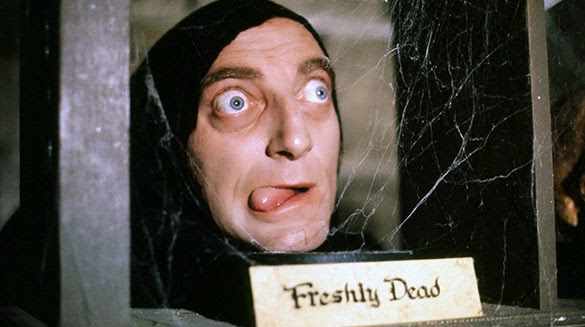darkinstinct
...lacks reading comprehension.
So there is radiation. #TeamFakeMoonlanding 
Do the heads decide which one eats today and which one shits out their mouth?
Probably useful to learn more about sex cell production in flatworms.I think the craziest part is that whatever happened to the flat worm in space changed it on a fundamental level as it continued to produce two headed flat worms. It wasn't just some one off fluke they only affected that worm.
Sour grapes, eh? Let's see you do it faster.
Compared to what? Two weeks is faster than other animals' regeneration, like starfish, or lizards re-growing their tails.
So does it have it's head up its ass?
Do the heads decide which one eats today and which one shits out their mouth?
So basically this new super flatworm can eat for as long as it wants without taking breaks.The digestive cavity has only one opening for both ingestion (intake of nutrients) and egestion (removal of undigested wastes); as a result, the food cannot be processed continuously.
Most platyhelminths have no anus and regurgitate undigested material through the mouth. However, some long species have an anus and some with complex, branched guts have more than one anus, since excretion only through the mouth would be difficult for them.[6] The gut is lined with a single layer of endodermal cells that absorb and digest food. Some species break up and soften food first by secreting enzymes in the gut or pharynx (throat).
...
Most turbellarians have pigment-cup ocelli ("little eyes"), one pair in most species, but two or even three pairs in some. A few large species have many eyes in clusters over the brain, mounted on tentacles, or spaced uniformly around the edge of the body.
...
The vast majority of turbellarians are hermaphrodites (have both female and male reproductive cells), and fertilize eggs internally by copulation.[6] Some of the larger aquatic species mate by penis fencing, a duel in which each tries to impregnate the other, and the loser adopts the female role of developing the eggs.
Two turbellarians are mating by penis fencing. Each has two penises, the white spikes on the undersides of their heads.
The power of being able to have your guts burst and launch worms at high velocity. However you can choose when to use it and when you do it's fatal.

I can't believe there's a real life creature with googley-eyes.


So what's the implication when humans colonize Mars? We'll just devolve into weaklings?
So what's the implication when humans colonize Mars? We'll just devolve into weaklings?
So what's the implication when humans colonize Mars? We'll just devolve into weaklings?

What could possibly go wrong?
Most flatworms are comparatively tiny though, aren't they?
You grow a face on your ass? For some people it'd be hard to tell the difference.
You get two dicks when you get to Mars
Yes, yes it does.
We should probably kill it with fire.
Suddenly, the three breasted woman from Total Recall makes more sense...

Suddenly, the three breasted woman from Total Recall makes more sense...
